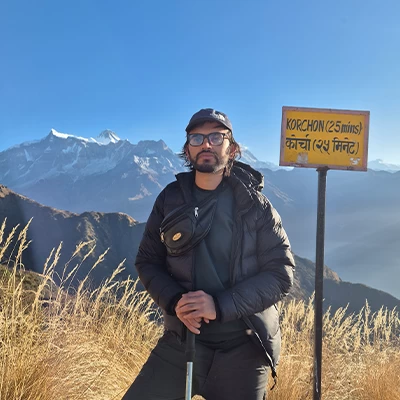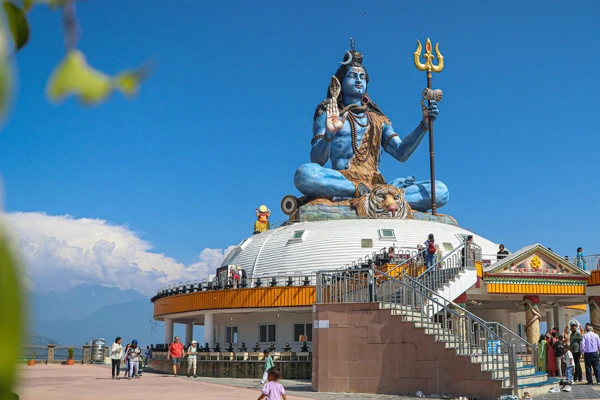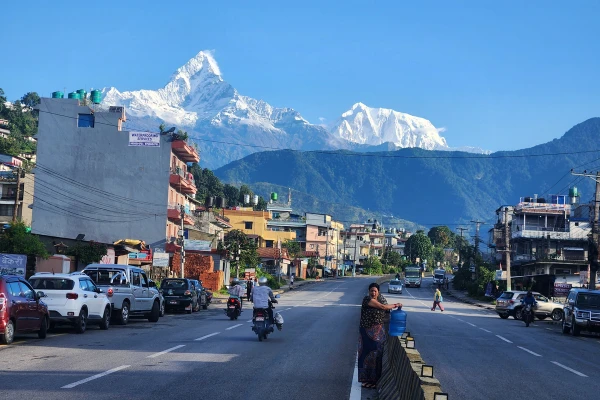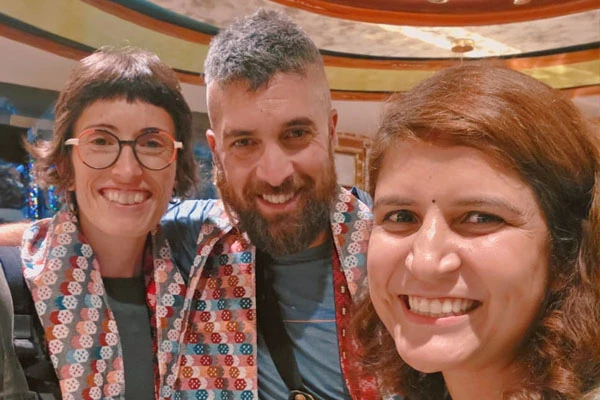Facts of Manaslu Circuit Trek
Category | Details |
Location | Gorkha District, Nepal (Near Tibet border) |
Trek Duration | 12-16 days (typically 14 days) |
Total Distance | 177 km (110 miles) |
Max. Altitude | Larkya La Pass (5,106m / 16,752ft) |
Difficulty | Moderate to Challenging (due to altitude & remote trails) |
Best Seasons | Spring (March-May) & Autumn (Sept-Nov) |
Permits Required | - Manaslu Restricted Area Permit (RAP) - Manaslu Conservation Area Permit (MCAP) - Local Area Permit - Annapurna Conservation Area Permit (ACAP) |
Starting Point | Machha Khola (drive from Kathmandu) |
Ending Point | Dharapani (links to Annapurna Circuit) |
Accommodation | Basic teahouses (limited luxury options) |
Food | Dal Bhat, noodles, pancakes (limited variety at higher altitudes) |
Major Risks | Altitude sickness, landslides, cold weather, and remote trails |
Special Notes | - No solo trekking (requires at least 1 guide) - Limited road access (few evacuation options) - Fewer trekkers than Everest/Annapurna |
Is the Manaslu Circuit Dangerous?
The Manaslu Circuit Trek winds through the rugged Gorkha District of Nepal, bordering Tibet. This trek is in the shadow of the world’s eighth-highest peak, Mount Manaslu (8,163m). This remote region features dramatic landscapes, from lush subtropical valleys to harsh alpine zones.
But is it dangerous? Manaslu has risks like all high-altitude treks. But with proper preparation, it is manageable. The biggest threats are altitude sickness, unpredictable weather (especially snowstorms near Larkya La), and occasional landslides on unstable trails. Remote geography means limited rescue infrastructure, so you must be self-sufficient.
However, stricter permits (requiring a guide) and improved teahouses have enhanced safety. Manaslu is not technically dangerous, but its isolation and raw terrain make it riskier than the Annapurna Circuit.
The real danger? Underestimating its challenges. Prepare thoroughly, and the rewards are pristine nature, Tibetan culture, and crowd-free trails.
Manaslu Circuit Trek Difficulty
The Manaslu Circuit Trek is considered moderate to challenging, primarily due to its high altitude, remote trails, and unpredictable weather. The journey to Larkya La Pass (5,106m) demands strong physical fitness and proper acclimatization to avoid altitude sickness. The trail includes long, steep ascents and descents, rocky paths, and occasional landslide-prone areas, especially after rainfall.
Manaslu’s infrastructure is basic, with fewer teahouses and limited emergency support, adding to the mental and physical strain. Daily walks typically last 5-7 hours, with some strenuous 8-9-hour days at higher elevations. However, the trek is difficult and balanced by its breathtaking scenery and cultural richness.
Success depends on pre-trek training, a well-paced itinerary with rest days, and hiring an experienced guide. For those prepared, the challenge is immensely rewarding, but underestimating it can lead to serious risks.
Trail Conditions and Physical Challenges
The Manaslu Circuit Trek is a raw and rugged adventure, where trail conditions can shift from well-trodden paths to unstable, landslide-prone sections. It will be riskier, especially after heavy rain or snowmelt. The route between Jagat and Lho has occasional rockfalls, while the descent from Larkya La Pass (5,106m) can be slippery with loose rocks. Crossing suspension bridges over roaring rivers and navigating narrow cliffside trails adds to the adrenaline. Manaslu’s remoteness means fewer emergency exits; once you are past Samdo, turning back requires retracing long distances.
Physical fitness is non-negotiable. You will need strong endurance for 6-8 hours of daily hiking, often on steep, uneven terrain. The high-altitude climbs (particularly to Larkya La) demand cardiovascular stamina, while the descents punish knees and quads. You should train for months with:
Weighted uphill/downhill hikes (mimicking pack weight).
Stair climbing (for lung capacity).
Core/leg strength exercises (to prevent injuries).
Best Season to visit the Manaslu Circuit Trek
The best time to trek the Manaslu Circuit is during spring (March to May) and autumn (late September to November). The weather is stable, skies are clear, and temperatures are comfortable for high-altitude hiking.
In spring, the trails come alive with blooming rhododendrons and lush greenery, while mild daytime temperatures (5°C to 15°C at lower elevations) make for pleasant trekking. However, higher passes like Larkya La may still hold snow early in the season. Autumn, on the other hand, offers crisp, dry conditions with unparalleled mountain visibility. Daytime temperatures range from 10°C to 20°C at lower altitudes, dropping below freezing at night above 4,000m.
Avoid the monsoon (June to August), when heavy rains trigger landslides and leeches infest the trails. Winter (December to February) consists of extreme cold, deep snow, and potential avalanches, making Larkya La impassable without mountaineering experience.
Teahouse and Food Safety
One of the biggest adjustments on the Manaslu Circuit Trek is adapting to the basic teahouse conditions and food hygiene standards in this remote region. Manaslu’s lodges are simpler, with shared bathrooms, limited electricity, and occasional shortages of hot water, especially at higher altitudes. Hygiene standards vary; while most teahouses keep dining areas clean, kitchens in smaller villages may lack proper food storage or sanitation practices. Stick to busy lodges where high guest turnover ensures fresher meals.
When it comes to food safety, the golden rule is "boil it, cook it, peel it, or forget it." Staples like dal bhat (lentils and rice), noodles, and soups are generally safe because they are cooked at high temperatures. Avoid raw salads, unpeeled fruits, and undercooked meat, which may harbor bacteria. Water safety is critical, so never drink tap water. Opt for boiled water (many teahouses provide it for a fee), iodine-treated water, or bottled water (though plastic waste is an environmental concern). Carry a portable water filter or purification tablets as backups.
Training for the Manaslu Circuit
The Manaslu Circuit Trek demands strong endurance, leg strength, and mental resilience due to its high-altitude passes, long hiking days (6-8 hours), and rugged terrain. To avoid injuries and enjoy the trek, a 3-6 month training plan is ideal. Here is how to prepare:
1. Cardiovascular Fitness (Most Important!)
Hiking with a Pack: Train on hills or stairs with a 10-15kg backpack to simulate trekking conditions.
Stair Climbing: Improves lung capacity for steep ascents/descents.
Running/Cycling: Builds stamina (aim for 3-4 cardio sessions weekly).
2. Leg & Core Strength
Squats & Lunges: Strengthen quads for long descents (which are harder than ascents!).
Calf Raises: Prevent fatigue on rocky trails.
Planks & Core Work: Helps with balance on uneven terrain.
3. Altitude Preparation
If possible, train at high altitudes (or use a gym altitude mask).
Practice slow, rhythmic breathing to improve oxygen efficiency.
4. Mental Preparation
Sample Weekly Training Plan (3 Months Before Trek)
Mon/Wed/Fri: 1-hour run/cycle + strength training (squats, lunges, core).
Tue/Thu: 30-45 min stair climbing with a weighted pack.
Weekends: 4-6 hour hikes with a full trekking pack.
Guide/Porter
A licensed guide is mandatory on the Manaslu Circuit (as per Nepal’s regulations), and hiring one significantly enhances your safety, navigation, and cultural experience. Guides are trained in first aid, altitude sickness recognition, and emergency evacuation. It’s critical in a remote region where medical help is scarce. They monitor your pace, adjust the itinerary for proper acclimatization, and know the safest trails to avoid landslides or unstable sections. Additionally, they communicate with teahouse owners to ensure food hygiene and secure the best lodging.
Porters, while not medically trained, play a vital role in reducing your physical strain by carrying heavy gear (typically up to 20-25kg). This allows you to focus on endurance and altitude adjustment. This minimizes exhaustion-related risks like slips or poor decision-making on tricky terrain. Reputable agencies provide porters with proper equipment and fair wages. Always choose ethical operators to support their welfare.
Why You Should Never Trek Without Them:
Altitude emergencies: Guides carry oximeters and can spot AMS early.
Navigation: Trail markers are scarce; guides prevent dangerous detours.
Cultural bridge: They resolve language barriers with locals in crises.
At Last,
The Manaslu Circuit Trek is an extraordinary adventure, but its remote and rugged nature demands respect, preparation, and mindfulness. To ensure a safe journey:
Acclimatize properly: never rush altitude gains.
Hire a licensed guide (mandatory) and treat porters ethically.
Pack essentials: first aid, water purifiers, and layers for extreme weather.
Follow local guidelines: stick to designated trails and respect permit rules.
The Manaslu region’s fragile ecosystem and Tibetan Buddhist culture deserve our care. Minimize plastic waste, support local teahouses, and tread lightly. The mountains reward those who approach them with humility and preparedness.
Ready for the challenge? With the right mindset and precautions, the Manaslu Circuit is not just safe; it is a life-changing experience. Stay sharp, stay kind, and let the Himalayas inspire you!
FAQs
What are the main risks associated with trekking to the Manaslu Circuit?
The trek’s primary dangers stem from its high-altitude terrain and remote location. Acute Mountain Sickness (AMS) is the most significant risk, particularly when crossing the 5,106m Larkya La Pass, where oxygen levels drop sharply. The trail also faces landslide risks, especially after rains, with unstable sections near Jagat, Deng, and Lho. Weather can shift rapidly; blizzards in autumn or monsoon floods in summer make certain periods hazardous. Proper acclimatization, a knowledgeable guide, and avoiding monsoon (June–August) and winter (December–February) drastically reduce these risks.
How can I prevent altitude sickness during the trek?
Altitude sickness can be life-threatening if ignored. To minimize risk:
Ascend gradually: Follow the "climb high, sleep low" principle, with rest days in Samagaon (3,530m) and Samdo (3,860m) before attempting Larkya La.
Hydration is critical: Drink 3–4 liters of purified water daily—dehydration mimics AMS symptoms.
Medication: Diamox (acetazolamide) can help acclimatization, but consult a doctor first.
Recognize symptoms: Early signs (headache, nausea) should prompt rest; confusion or vomiting requires immediate descent.
How experienced should my guide be for the Manaslu Circuit trek?
A licensed guide with Manaslu-specific expertise is mandatory. Ideal guides:
Have 5+ Manaslu treks under their belt, knowing alternate routes for landslides.
Carry pulse oximeters to monitor oxygen levels and first-aid kits for emergencies.
Speak English fluently to communicate symptoms to rescue teams.
Understand local customs to navigate cultural sensitivities (e.g., monastery etiquette).
Is travel insurance necessary for the Manaslu Circuit trek?
Insurance is non-negotiable. Policies must explicitly cover:
Helicopter evacuation up to 5,500m (e.g., Global Rescue or World Nomads).
High-altitude trekking (many exclude altitudes >3,000m).
Medical coverage for AMS treatment (HACE/HAPE).
Trip interruption (monsoon landslides may delay flights).
Can I do the Manaslu Circuit trek solo?
No, you cannot do a solo trek. You need a special permit through a registered trekking agency and a guide for the Manaslu Circuit Trek.
What kind of gear do I need for the trek?
Packing right is a safety measure.
Footwear: Waterproof, ankle-support boots (e.g., Salomon Quest 4) for rocky trails.
Clothing: Layered system—merino wool base, insulated mid-layer, Gore-Tex shell.
Sleeping bag: Rated to -10°C (teahouses lack heating).
Safety gear: Headlamp, water filter (SteriPen), and trekking poles for river crossings.
When is the best time to do the Manaslu Circuit trek?
Spring (March–May): Warmer days (5–15°C), but snow lingers on high passes.
Autumn (September–November): Stable weather, clear skies (ideal for Larkya La).
Avoid: Monsoon (landslides, leeches) and winter (-20°C temps, closed teahouses).
Is it safe for women to trek to the Manaslu Circuit?
The Manaslu Circuit Trek is generally safe for women but requires sensible precautions due to its remote nature and cultural context. Teahouses are basic but secure; opt for lodges with female owners or where other trekkers are staying. Hygiene challenges exist, so bring menstrual products (dispose of them properly) and wet wipes, as showers are scarce. The trail itself presents equal physical challenges for all genders. Many women complete this trek safely each year by taking standard precautions. The rewards of breathtaking scenery and cultural immersion far outweigh the manageable risks with proper preparation.





